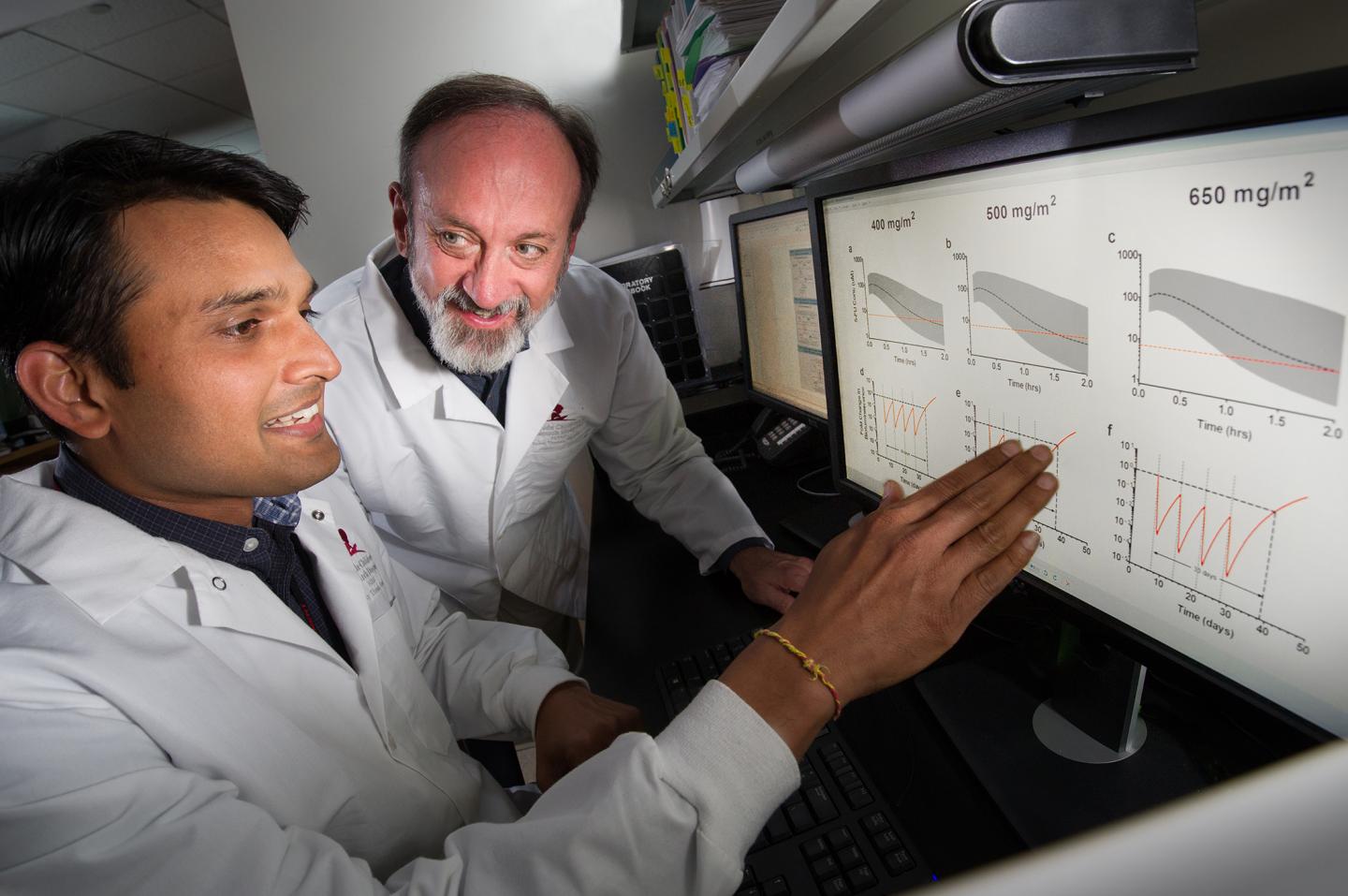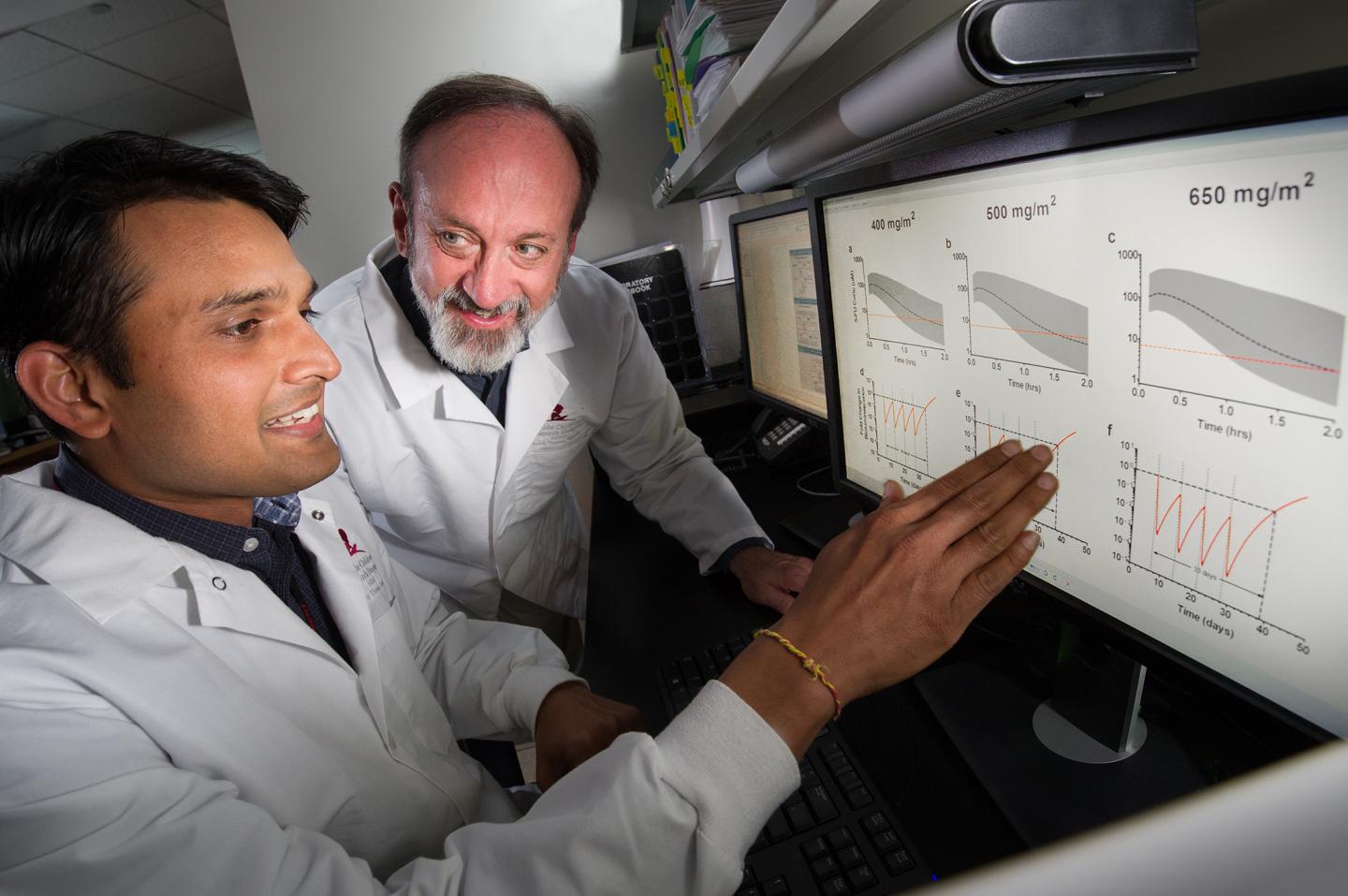
St. Jude Children’s Research Hospital scientists have used sophisticated pharmacologic modeling and simulation to translate preclinical findings into a successful phase I clinical trial of a chemotherapy agent for treatment of ependymoma. The research marked the first time the approach has been used to calculate drug doses for a clinical trial in pediatric brain tumor patients.
“The approach used in this study should serve as a template for drug development, especially for rare diseases like ependymoma where the need for promising therapies is high but few patients are available for clinical trials,” said corresponding author Clinton Stewart, Pharm.D., a member of the St. Jude Department of Pharmaceutical Sciences. The findings appeared recently in the journal CPT: Pharmacometrics and Systems Pharmacology.
Ependymoma occurs in about 200 U.S. children and adults annually, but the disease is most common in infants and children. The five-year survival rate for pediatric patients is 72 percent. Effective chemotherapy for the tumor is lacking. Surgery and radiation therapy are the foundation of current treatment.
A previous St. Jude-led study found that ependymoma tumors shrank and mice lived longer when high- dose chemotherapy with the drug 5-fluorouracil was administered rapidly as an intravenous bolus rather than infused gradually. Through bolus administration, researchers hoped to magnify the drug’s therapeutic potential by helping to rapidly achieve a high therapeutic level of 5-fluorouracil in the bloodstream.
The drug is widely used for treatment of colon cancer and has been administered as a bolus in adults, but nothing was known about how children would handle 5-fluorouracil after bolus dosing. A challenge for researchers designing the phase I clinical trial of bolus-administered 5-fluorouracil was how to use data from mice and adults to calculate the pediatric dose. Phase I studies are designed to evaluate drug safety, identify side effects and determine the drug dose to use in subsequent clinical trials of safety and effectiveness. The challenge was to identify a dose likely to kill tumor cells but not cause serious side effects.
To answer the question, researchers in this study used applied mathematics, supercomputers and other tools to analyze data from mice and adults to model and simulate the optimal dose for pediatric ependymoma patients. The analysis included pharmacokinetic and pharmacodynamics data. Pharmacokinetic data included blood and brain levels of 5-fluorouracil collected at different times and at different doses. Pharmacodynamics focused on how the drug affected tumor growth and survival of the mice.
Based on the analysis, researchers recommended patients enrolled in the St. Jude-led phase I trial receive a starting 5-fluorouracil dose of 500 milligrams per meter2 body surface area administered weekly as a bolus for up to 16 treatment cycles. The study included 26 patients, ages 22 years old and younger with ependymoma that recurred after treatment.
“The results of the phase 1 clinical trial supported the model-based dosing recommendations,” Stewart said.
The model helped to streamline identification of the optimal dose and reflects advances in supercomputing that have occurred since 2000, said co-first author Yogesh Patel, Ph.D., a postdoctoral fellow in Stewart’s laboratory. “The results gave us greater confidence going into the phase I study that the recommended dose would be sufficient for anti-tumor activity,” he said.
###
The co-first author is Vinay Daryani, Ph.D., formerly of St. Jude. The other authors are Michael Tagen, Genentech, South San Francisco; David Turner, Merck Research Laboratories, Rahway, N.J.; Angel Carcaboso, Hospital Sant Joan de Déu Barcelona, Barcelona, Spain; Jennifer Atkinson, Pennsylvania State College of Medicine, Hershey, Penn.; Amar Gajjar, St. Jude; Richard Gilbertson, Cambridge Cancer Centre, Cambridge, U.K.; and Karen Wright, formerly of St. Jude.
The study was supported in part by the Collaborative Ependymoma Research Network, a grant (CA21764) from the National Institutes of Health; and ALSAC.
Media Contact
Frannie Marmorstein
[email protected]
901-595-0221
@StJudeResearch
http://www.stjude.org
The post Modeling and simulation help optimize chemotherapy to combat brain tumor appeared first on Scienmag.





